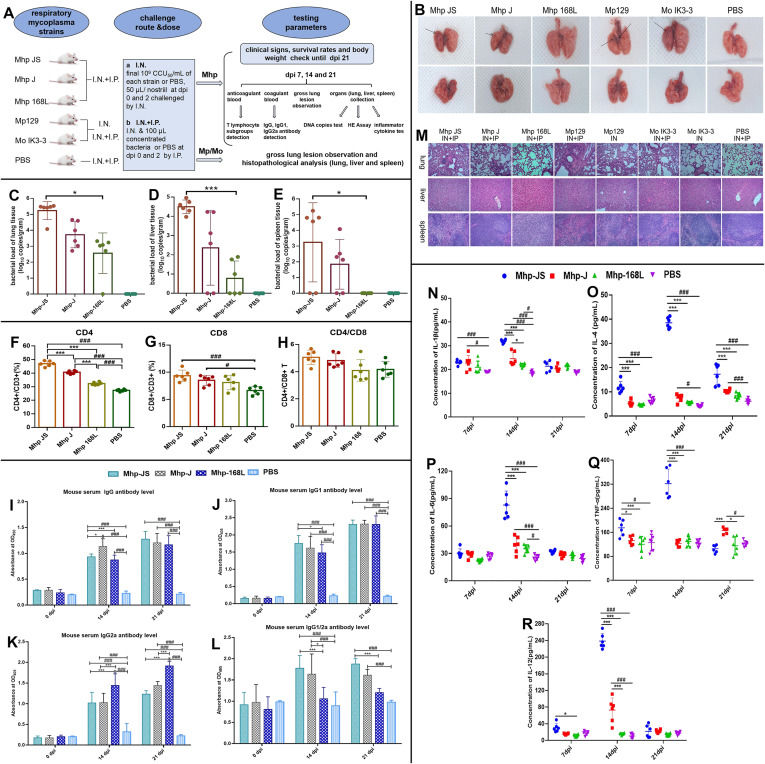
Establishment of a mouse model of respiratory mycoplasma challenged intranasally combined intraperitoneally eliciting chronic inflammation and lung consolidation


Mycoplasma hyopneumoniae (Mhp) and Mycoplasma ovipneumoniae (Mo), similar to Mycoplasma pneumoniae (Mp), initiate a chronic respiratory infection with concomitant pulmonary disease, causing substantial harm worldwide.1 A mouse model with genetic consistency helped to elucidate the unknown pathogenic mechanism of respiratory mycoplasmas in large animals and humans. While the intraperitoneal route would facilitate dissemination of infectious agents to the adventitia, combined challenge or immunization would promote replication of microorganisms or vaccine immune effects; for example, intraperitoneal combined intranasal route increased gamma interferon-specific CD8 T cells by more than 60 times after influenza infection.2
